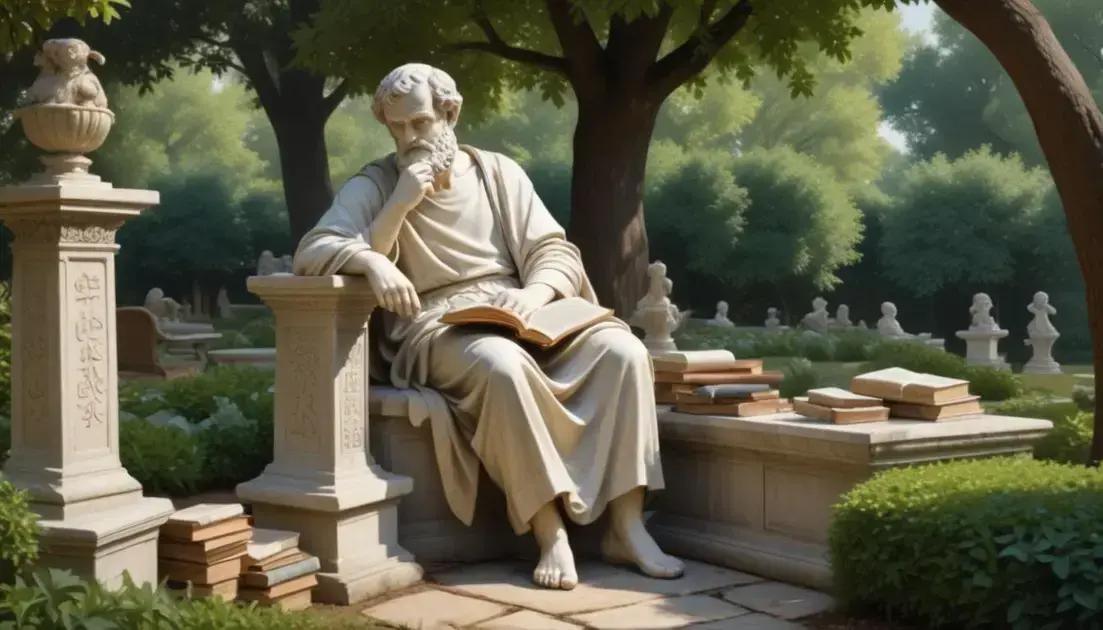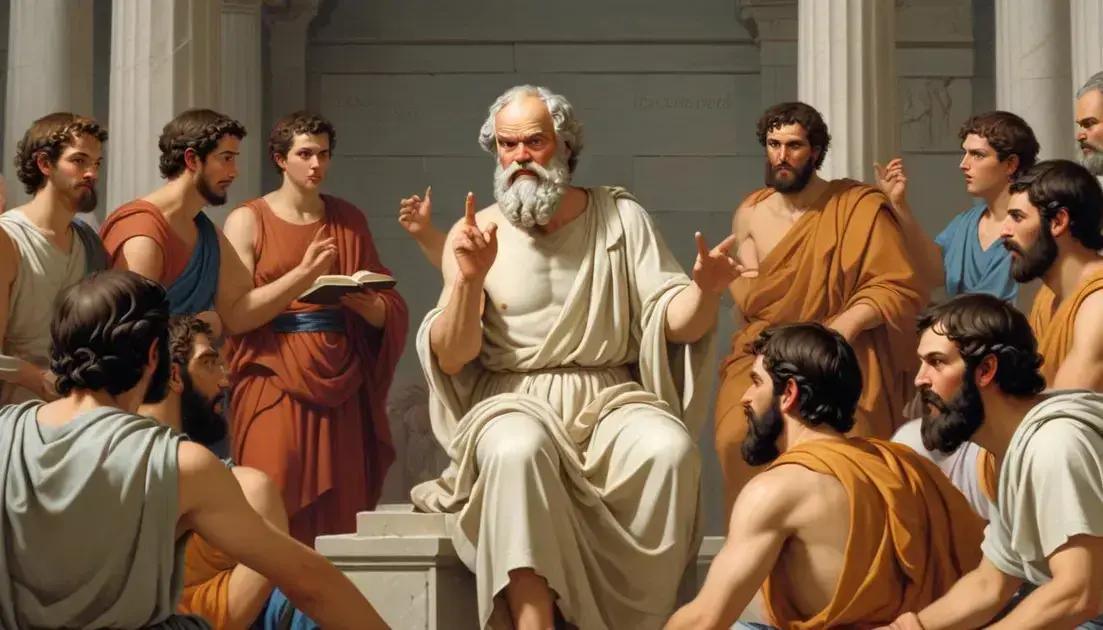
Greek Sculpture: Harmony Between Body and Spirit
The legacy of Greek sculpture has had a profound influence on art and culture throughout history. It inspires artists today by highlighting beauty, proportion, and harmony, shaping the way we perceive creativity. Rooted in philosophical ideals, Greek sculptures not only depict the human form but also reflect ancient values and beliefs. Their impact can be seen in both Renaissance art and modern interpretations, making Greek sculpture a crucial part of art education and cultural appreciation.
Greek Sculpture represents an extraordinary blend of artistry and philosophy, reflecting ideals of beauty and harmony that still resonate today. Ever wondered how these ancient works continue to inspire?
The Ideal Body: Understanding Greek Aesthetics
The ancient Greeks had a fascinating view of beauty and the human body. They believed that the ideal body represented balance and harmony between mind and spirit. This idea shaped their art and sculpture during that time.
What is Greek Aesthetics?
Greek aesthetics is all about how beauty is perceived in art and life. It emphasizes symmetry and proportion. For the Greeks, a well-proportioned body was not just attractive but also a reflection of a healthy mind.
The Influence of Philosophy
The Greek philosophers, like Plato and Aristotle, wrote about ideal beauty. They said that beauty connects with truth and goodness. So, when creating sculptures, artists aimed to reflect these ideals.
Common Features of Greek Sculpture
Greek sculptures often portray muscular bodies with perfect symmetry. The attention to detail shows the artists’ dedication to capturing the essence of humanity. These sculptures were not just decorations; they conveyed deep messages about life and virtue.
Real-Life Examples
Famous works like the Venus de Milo and David by Michelangelo highlight these ideals. Each piece reflects the harmony and balance that Greeks prized. Looking at these sculptures, you can see what they considered the perfect form.
The pursuit of the ideal body in Greek aesthetics continues to inspire artists and thinkers today. It raises questions about how we define beauty and perfection in our own lives.
Materials and Techniques: Crafting the Perfect Form
Crafting the perfect form in Greek sculpture took skill and care. Artists used various materials to create their masterpieces. The most common materials included marble, bronze, and clay.
Marble: The Preferred Choice
Marble was a favorite for its beauty and durability. Artists liked its fine texture, which allowed for smooth and detailed surfaces. The Parthenon sculptures show the stunning effects marble can achieve.
Bronze: A Strong Alternative
Bronze sculptures were also popular. This alloy of copper and tin was strong and could hold intricate shapes. Bronze allowed for more dynamic poses unlike marble, which could be more rigid.
Clay: The Starting Point
Before carving in stone or casting in bronze, artists often worked with clay. It was easy to shape and helped them plan their designs. Many clay models were used to visualize the final piece.
Tools and Techniques
Artists used special tools to carve stone and model clay. Chisels, hammers, and drills helped shape the materials precisely. Their techniques included smoothing, polishing, and adding details.
Understanding these materials and techniques helps us appreciate Greek sculpture more. Each piece reflects the time and effort invested by skilled artists.
Philosophical Influences: More Than Just Art
Greek sculpture wasn’t just about creating beautiful images. It was also deeply connected to philosophy and the ideas of the time. Artists sought to express what they believed about life and humanity through their work.
How Philosophy Shaped Art
Philosophers like Plato and Aristotle influenced artists greatly. They talked about ideals, ethics, and the nature of reality. These discussions shaped how artists thought about their subjects.
Beauty and Truth
For the Greeks, beauty was tied to truth. Musicians, poets, and sculptors believed their works should reflect a higher reality. They tried to capture not just the physical form but also the essence of their subjects.
The Role of the Body
The human body was a key theme in Greek art. It symbolized the connection between body and spirit. By creating perfect forms, artists aimed to express divine harmony and balance.
Art as a Reflection of Society
Sculptures often reflected social values and ideals. They depicted gods, heroes, and everyday people. This helped people relate to the figures and see their own lives and struggles in the art.
So, Greek sculptures are more than pretty objects. They’re important pieces of culture that show how art and philosophy were intertwined in ancient times.
The Lasting Legacy of Greek Sculpture
The legacy of Greek sculpture is truly remarkable. It continues to influence artists and thinkers worldwide. Many elements from these ancient works still resonate today.
Impact on Renaissance Art
During the Renaissance, artists looked to Greek sculptures for inspiration. They admired the focus on human form and natural beauty. Sculptors like Michelangelo created works that reflected this ancient influence.
Modern Interpretations
Even today, Greek sculpture inspires modern art. Many contemporary artists draw from the techniques and themes of the ancients. This brings a timeless quality to their work.
Education and Appreciation
Greek sculptures are crucial in art education. Students study these works to understand the basics of form and composition. They teach about balance, proportion, and the beauty of the human body.
Cultural Significance
These sculptures also reflect ancient Greek values. They show ideals of beauty, strength, and harmony. By preserving these artworks, we gain insight into a culture that shaped our world.
In museums and galleries, Greek sculptures attract audiences. They spark interest in ancient history and art. Their lasting legacy helps keep the spirit of ancient Greece alive.
Conclusion
In conclusion, the legacy of Greek sculpture remains a powerful influence on art and culture today. These ancient works continue to inspire artists across generations, showcasing timeless beauty and craftsmanship. By learning from the techniques and ideals of Greek artists, we can appreciate the importance of form and balance in art.
Moreover, the philosophical ideas behind these sculptures remind us that art is more than just appearance. It reflects values and beliefs that resonate with us even now. Exploring this connection deepens our understanding of history, culture, and the human experience.
As we celebrate the impact of Greek sculpture, we also honor the creativity and vision of those ancient artists. Their masterpieces invite us to explore our own ideas about beauty, strength, and harmony in our world today.


